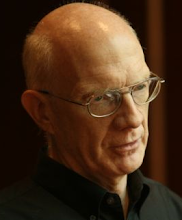There is really only one Bible of practical cycling (or bicycle commuting, if you prefer.) It's a book entitled "Effective Cycling" and it was first written by a visionary named John Forrester in 1976. I remember seeing my first copy — it was a plastic-comb bound, self published book amateurishly published by a company called Custom Cycle Fitments (CCF) of Palo Alto, California. CCF manufactured made-to-order custom-sized cycling clothes, including rain gear. (CCF has been out of business for quite a while, something that is too bad but is probably inevitable. Impossible to compete with LL Bean and their suppliers in the Far East. And not enough call for custom sized things for outsized people like me. I'm 198cm tall. I wonder if, even when they were viable, they didn't realize more revenue off this book than off their clothing.)
But I digress—back to Effective Cycling. It's astonishing to pick up a later edition (it's now in its 6th edition, picked up in 1984 by the MIT Press) and realize how little of the core information in the book has changed, and how relevant the book is today. It's truly the only book you'll ever need to read about cycling (unless you want to race professionally, which is a different topic), and it tells you everything essential about bikes, including building, maintenance, sizing, riding technique, and safe use. Most users will never even true a spoked wheel, much less build one from scratch, but it you want to, step-by-step instructions are in this book. As such, it can be more than a little intimidating to the new serious cyclist.
As good and complete a reference as it is for bike assembly and maintenance, however, the seminal contribution made by "Effective Cycling" from its beginnings is about safe bicycle transportation — how to safely "drive" a bike in the midst of automobile traffic. Forrester worked out a relatively complete set of cycling "rules of the road" and since 1976, everyone else who has written on the topic has really just been polishing Forrester's edifice. Not everyone agrees with Forrester, whose central principle is that most traffic devices intended to "protect" cyclists do no such thing, and cyclists are best served when they behave predictably in traffic, not separated from cars.
There are many people who don't like the somewhat imperious tone of parts of Forrester's work — passages such as "The government's bicycle design standard is based on engineering incompetence" turn some people off. But Forrester has a point. Bicycle commuting requires (I think) a hard-nosed confidence that comes from a presence of mind (some would say, a mental toughness) and sugar-coating that requirement would be deceptive and possibly dangerous. I will talk more about "St. John the Curmudgeonly" later and theorize about the source of this attitude.
You can buy a paper-bound copy of the book on Amazon here (Disclaimer: I provide the link for convenience and receive no compensation of any sort from sales of the book.)
Monday, June 30, 2008
Subscribe to:
Post Comments (Atom)





1 comment:
Be sure to spell St. John's last name correctly.
Post a Comment